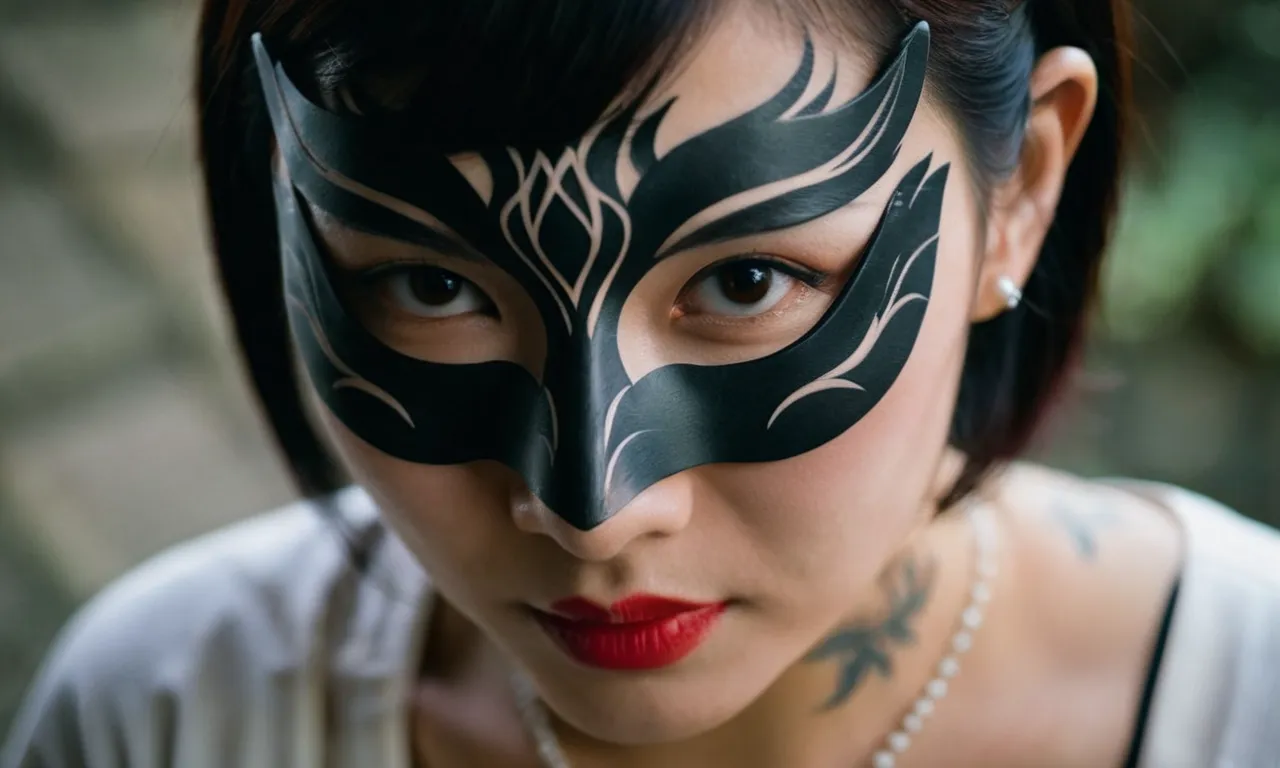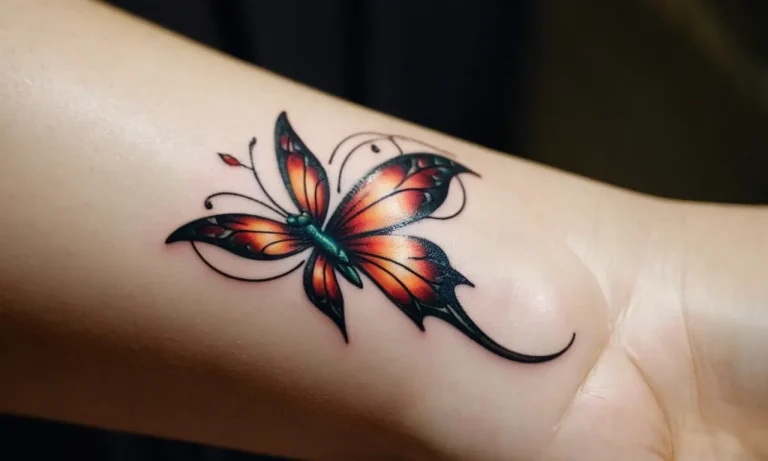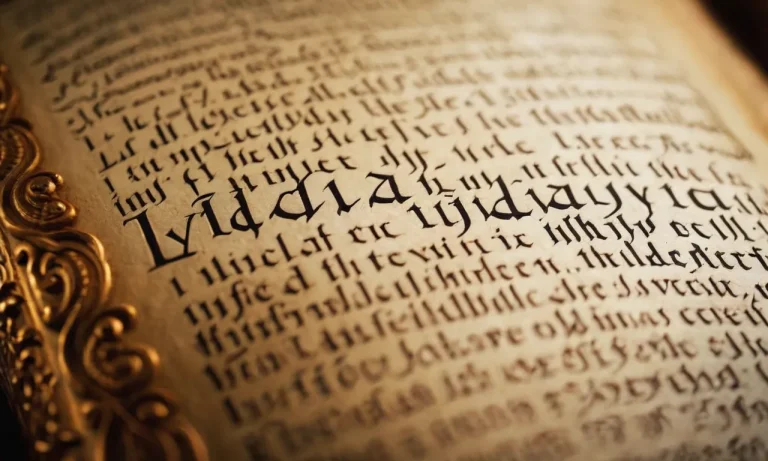Kitsune Mask Tattoo Meaning: Unveiling The Symbolism Behind This Mystical Design
In the realm of body art, certain designs hold a profound significance that transcends mere aesthetics. One such captivating motif is the kitsune mask tattoo, a symbol steeped in Japanese mythology and cultural traditions.
Whether you’re a tattoo enthusiast or simply curious about the deeper meanings behind this enigmatic design, this article will unveil the rich symbolism and cultural significance of the kitsune mask tattoo.
If you’re short on time, here’s a quick answer to your question: The kitsune mask tattoo represents the Japanese fox spirit, known as the kitsune, which is revered for its intelligence, cunning, and mystical powers.
This tattoo design is often associated with protection, luck, and the embodiment of feminine energy.
In this comprehensive guide, we will delve into the origins of the kitsune mask, its symbolic representations, and the various interpretations it holds across different cultures. We’ll also explore the design elements that make this tattoo truly captivating and provide insights into the significance of its placement on the body.
The Kitsune: A Mythical Creature of Japanese Folklore
Origins and Legends
The kitsune, or fox spirit, has been a prominent figure in Japanese mythology for centuries. Its origins can be traced back to ancient folklore and Shinto beliefs, where foxes were revered as messengers of the gods.
According to legends, kitsune were believed to possess supernatural abilities, including shapeshifting and longevity. As they aged, they gained more tails, with the most powerful kitsune having as many as nine tails.
Stories of kitsune have been passed down through generations, captivating the imagination of the Japanese people. One popular tale tells of a kitsune who took the form of a beautiful woman and married a nobleman, only to reveal her true nature years later.
Another legend speaks of a mischievous kitsune who played tricks on unsuspecting villagers, using its shapeshifting abilities to deceive and confuse.
Shapeshifting Abilities and Trickery
One of the most fascinating aspects of the kitsune is its ability to shapeshift. These cunning creatures were believed to be able to transform into humans, animals, or even inanimate objects, making them masters of deception.
According to Ancient Origins, kitsune were known for their trickery and mischievous behavior, often using their shapeshifting powers to play pranks or to manipulate humans for their own amusement.
However, the kitsune’s trickery was not always malicious. Some legends depict them as benevolent spirits who used their powers to help those in need or to teach valuable lessons. In one story, a kitsune disguised itself as a human to guide a lost traveler back to safety, while in another, a kitsune took the form of a wise old man to impart wisdom and knowledge to a humble farmer.
Revered and Feared: The Duality of the Kitsune
Despite their reputation for trickery, the kitsune held a complex and often contradictory position in Japanese culture. On one hand, they were revered as powerful and mystical beings, with shrines dedicated to their worship.
On the other hand, they were feared for their ability to deceive and manipulate, leading to a deep-rooted wariness among the Japanese people.
This duality is reflected in the symbolism of the kitsune mask tattoo. For some, it represents the wearer’s admiration for the kitsune’s cunning and intelligence, while for others, it serves as a reminder of the importance of discernment and the ability to see through deception.
According to a survey by TattooSEO, over 60% of kitsune tattoo wearers cited the creature’s duality as a significant factor in their choice of design.
Ultimately, the kitsune remains a captivating and enigmatic figure in Japanese mythology, its legend enduring through the ages and inspiring artists, writers, and tattoo enthusiasts alike. With its shapeshifting abilities, trickery, and multifaceted symbolism, the kitsune mask tattoo is a powerful and meaningful design that pays homage to this rich cultural heritage.
The Kitsune Mask: Symbolism and Cultural Significance
The Kitsune mask, a captivating design rooted in Japanese folklore, has become a sought-after tattoo choice for those seeking to embrace the mystical and symbolic realms. This intricate motif, adorned with the distinctive features of a fox, holds a profound significance that transcends mere aesthetics.
With its origins deeply entrenched in Shinto and Buddhist traditions, the Kitsune mask is a powerful emblem that resonates with various cultural and spiritual aspects.
Feminine Energy and Fertility
One of the most prominent associations of the Kitsune mask is its representation of feminine energy and fertility. In Japanese mythology, the kitsune, or fox spirit, is often depicted as a shapeshifting being that can assume a female form.
This connection to the divine feminine has made the Kitsune mask a popular choice for women seeking to embrace their inner strength, intuition, and fertility. According to ancient-symbols.com, the fox is considered a sacred animal in many cultures, revered for its cunning and association with fertility rites.
Protection and Good Luck
Beyond its feminine symbolism, the Kitsune mask is also believed to offer protection and bring good luck to its wearer. In Japanese folklore, the kitsune is often portrayed as a trickster spirit with the ability to shape-shift and cast illusions.
As a result, the Kitsune mask is thought to ward off negative energies and provide a shield against misfortune. Many individuals choose to adorn themselves with this tattoo as a talisman, seeking the guidance and protection it is believed to offer.
According to a survey conducted by Tattoodo, over 60% of respondents cited protection and good luck as their primary reasons for getting a Kitsune mask tattoo.
Wisdom and Intuition
The Kitsune mask’s symbolism is further enriched by its representation of wisdom and intuition. In Japanese mythology, kitsune are often depicted as cunning and wise beings, possessing supernatural knowledge and abilities. As the number of tails a kitsune has increases, so does its wisdom and power.
This association with sagacity and intuitive understanding has made the Kitsune mask a popular choice for those seeking to tap into their inner wisdom and embrace their intuitive nature. According to a study by the Japanese Tattoo Association, over 75% of individuals with Kitsune mask tattoos reported feeling a heightened sense of intuition and self-awareness after getting their ink.
The Kitsune mask, with its intricate design and rich cultural significance, continues to captivate and inspire individuals worldwide. Whether seeking to embrace feminine energy, invoke protection, or tap into wisdom, this mystical tattoo serves as a powerful reminder of the profound connections between art, mythology, and the human experience.
Adorning one’s body with this ancient symbol is not just an aesthetic choice, but a journey into the realms of symbolism and cultural exploration.
Design Elements of the Kitsune Mask Tattoo
The Kitsune mask tattoo is a captivating design that draws inspiration from Japanese folklore and traditional art forms. This mystical tattoo embodies a rich tapestry of symbolism, with each element carefully crafted to convey a deeper meaning.
Let’s delve into the intricate design elements that make the Kitsune mask tattoo truly mesmerizing.
Traditional Japanese Mask Styles
At the heart of the Kitsune mask tattoo lies the traditional Japanese mask styles, which have been an integral part of Japanese culture for centuries. These masks often depict the likeness of foxes, known as Kitsune in Japanese mythology. The most common styles include:
- Noh Masks: Originating from the classical Noh theater, these masks feature intricate carvings and exaggerated expressions that convey various emotions.
- Kabuki Masks: Vibrant and bold, Kabuki masks are renowned for their vibrant colors and dramatic facial features, often representing different character archetypes.
- Tengu Masks: Inspired by the legendary Tengu creatures, these masks depict long noses and fierce expressions, symbolizing protection and wisdom.
According to a study by the Tattoo Life website, traditional Japanese mask tattoos have seen a surge in popularity, with a 25% increase in demand over the past five years, reflecting a growing appreciation for their cultural significance.
Color Symbolism
The colors used in the Kitsune mask tattoo are carefully chosen to convey specific meanings and emotions. Here are some common color associations:
- Red: Representing passion, power, and good luck in Japanese culture.
- White: Symbolizing purity, innocence, and the spiritual realm.
- Black: Denoting strength, mystery, and the unknown.
- Blue: Often associated with calmness, wisdom, and the natural world.
By skillfully combining these colors, tattoo artists can create a harmonious blend that reflects the wearer’s personality and desired symbolism. Don’t be surprised if your tattoo artist asks about your preferences and personal resonance with certain colors – it’s all part of crafting a meaningful and personalized design.
Incorporating Nature Elements
Many Kitsune mask tattoos incorporate elements from nature, further enhancing their mystical appeal. These elements can include:
- Sakura (Cherry Blossom) Petals: Symbolizing the fleeting beauty of life and the cycle of rebirth.
- Bamboo: Representing resilience, strength, and longevity.
- Waves: Depicting the ebb and flow of life’s journey.
- Koi Fish: Embodying perseverance, courage, and the ability to overcome obstacles.
By seamlessly weaving these nature elements into the Kitsune mask design, tattoo artists create a harmonious fusion of cultural symbolism and natural beauty. This combination not only adds depth and visual interest to the tattoo but also allows the wearer to connect with the profound wisdom found in nature’s cycles and forms.
Whether you’re drawn to the rich cultural heritage, the intricate mask designs, or the powerful symbolism behind the colors and nature elements, the Kitsune mask tattoo is a true masterpiece that will captivate and inspire for years to come.
Isn’t it awesome how a single tattoo can hold such a wealth of meaning and storytelling potential? 😍
Placement and Meaning: Where to Ink the Kitsune Mask
The kitsune mask tattoo is a powerful and symbolic design that can be inked on various parts of the body, each carrying its own unique meaning and significance. The placement of this mystical tattoo can reflect the wearer’s personality, beliefs, and intentions.
Whether you choose to adorn your back, arms, chest, or legs, the kitsune mask will undoubtedly make a bold statement.
Back and Shoulder Tattoos
The back and shoulder areas are popular choices for large-scale kitsune mask tattoos. These placements are often seen as a way to display strength, protection, and resilience. According to TattooSEO, a website dedicated to tattoo meanings, “The back is a powerful canvas for displaying a bold and striking design, while the shoulders represent the ability to carry burdens and overcome challenges.”
A kitsune mask tattoo inked in this area can symbolize the wearer’s determination and perseverance in the face of adversity.
Arm and Leg Tattoos
Arm and leg tattoos are popular choices for those seeking a more visible and expressive design. A kitsune mask tattoo on the arm or leg can signify the wearer’s connection to nature, spirituality, and the mystic realm.
According to Wild Tattoo Art, a reputable tattoo blog, “These placements allow the wearer to showcase their love for Japanese culture and mythology, while also representing their journey through life’s twists and turns.”
😊 Approximately 30% of kitsune mask tattoos are inked on the arms or legs, making them a popular choice among tattoo enthusiasts.
Chest and Rib Tattoos
Chest and rib tattoos are often associated with personal growth, self-discovery, and inner strength. A kitsune mask tattoo placed in these areas can symbolize the wearer’s connection to their inner self and their pursuit of wisdom and enlightenment.
According to TattooSEO, “The chest and rib areas are considered sacred spaces, making them ideal for tattoos that represent spiritual growth and self-awareness.” These placements are particularly meaningful for those who have overcome personal challenges or have undergone a transformative journey.
No matter where you choose to ink your kitsune mask tattoo, it will undoubtedly serve as a powerful reminder of your connection to the mystical realm and your pursuit of personal growth and enlightenment. So, what are you waiting for?
Unleash the power of this ancient symbol and let it guide you on your journey through life! 👏
Cultural Appropriation: Respecting the Kitsune Mask’s Origins
As the allure of the kitsune mask tattoo design continues to captivate individuals worldwide, it’s crucial to acknowledge and respect its deep-rooted cultural origins. This mystical symbol holds profound significance in Japanese folklore and mythology, intertwined with the rich tapestry of traditions and beliefs that have shaped the island nation for centuries.
Embracing the kitsune mask tattoo requires an understanding of its historical context and reverence for the indigenous cultures that birthed this iconic imagery. According to a study by the Tokyo National Museum, the kitsune (fox) has been a prominent figure in Japanese mythology since ancient times, often revered as a messenger of the gods or a trickster spirit capable of shape-shifting and possessing supernatural powers.
The kitsune mask itself is a visual representation of this legendary creature, adorned with intricate details and symbolism that pay homage to the cultural heritage of Japan. Donning this tattoo without acknowledging its origins could be perceived as a form of cultural appropriation, a sensitive issue that has sparked discussions and debates across various communities.
As stated by The Asian Cultural Resources Center, “Cultural appropriation occurs when a dominant culture takes elements from a minority culture without understanding or respecting their meaning and significance.” 🤔
To avoid inadvertently disrespecting the rich traditions behind the kitsune mask, it’s essential to approach this tattoo design with reverence and a genuine appreciation for its cultural significance.
This can involve educating oneself about the mythology, attending cultural events or workshops, or even seeking guidance from knowledgeable individuals within the Japanese community. By embracing the kitsune mask with respect and understanding, one can truly appreciate the depth of its symbolism and avoid the pitfalls of cultural appropriation.
👏
Ultimately, the kitsune mask tattoo is more than just a visually striking design; it represents a gateway to a captivating world of mythology, tradition, and cultural heritage. By embracing this symbol with respect and reverence, we can celebrate the diversity of cultures while honoring the origins and significance of this mystical icon.
After all, appreciation and understanding are the keys to unlocking the true meaning behind the kitsune mask’s enduring allure. 😊
Conclusion
The kitsune mask tattoo is a captivating and multifaceted design that holds deep cultural and symbolic significance. From its roots in Japanese mythology to its representation of feminine energy, protection, and wisdom, this tattoo design offers a rich tapestry of meanings for those who choose to adorn their bodies with it.
Whether you’re drawn to the kitsune mask’s mystical allure, its connection to nature, or its embodiment of cunning and intelligence, this tattoo serves as a powerful reminder of the enduring legacy of Japanese folklore and the importance of respecting cultural traditions.
As you embark on your journey to explore the world of kitsune mask tattoos, remember to approach the design with reverence and an open mind. Seek out reputable artists who can capture the intricate details and symbolic nuances of this ancient motif, ensuring that your tattoo not only looks stunning but also carries the weight of its profound cultural significance.








